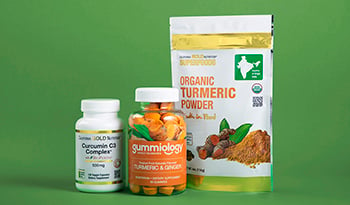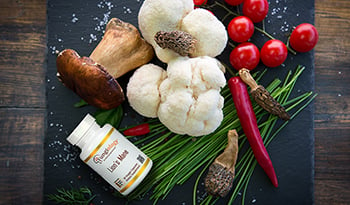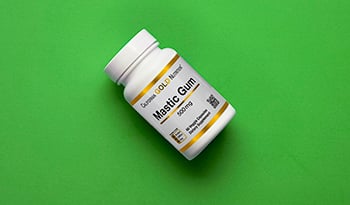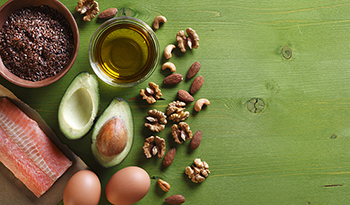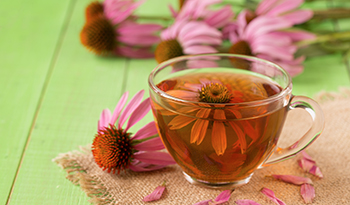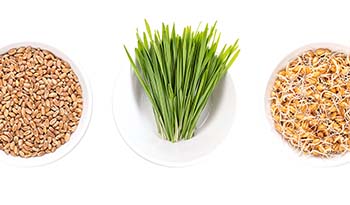What Are Prebiotics? 15 Natural Food Sources + Health Benefits
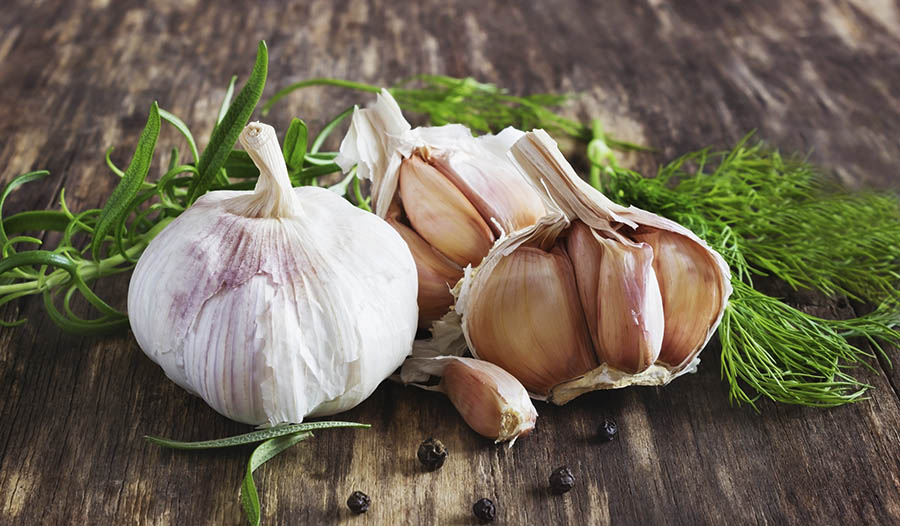
Probiotics are living microorganisms that exist in the body and are available in certain foods and supplements. When probiotics are consumed, they can help repopulate the gut with healthy bacteria to optimize the digestive system. For those with chronic digestive concerns, like irritable bowel syndrome for example, probiotics can help restore bowel function back to normal.
While probiotics have gained popularity in the past decade or so, prebiotics are lesser-known but just as important. Prebiotics are the substances (available in certain foods) that beneficial gut bacteria require to help them to grow and flourish. In a sense, prebiotics are like “pet food” for good bacteria.
Examples of Foods with Probiotic Properties
- Kefir drink (starter kits are available to make homemade kefir)
- Sauerkraut
- Kombucha tea
- Kimchi – A common traditional side dish in Korea made from salted and fermented vegetables
- Tempeh – A cultured soy product originating from Indonesia
- Miso Soup – A fermented soybean paste consumed as a soup
- Pickled cucumbers
- Natto – A traditional Japanese food made from fermented soybeans
It is important that we consume probiotic-containing foods as part of a regular diet, and it is also important that we eat prebiotic foods to feed the estimated 100 trillion bacteria that live in our stomachs, small intestine and large intestine.
Prebiotic Foods and Supplements
Prebiotic foods are rich in a special type of carbohydrate called oligosaccharides—oligo means “a few” and saccharide translates to “sugar”. Oligosaccharides fall between simple carbohydrates and complex carbohydrates in size, meaning that they usually are three to 10 sugar molecules long. The gut’s good bacteria eat these fermentable sugars to help ensure the diversity of the gut bacteria. In essence, oligosaccharides are “food” for the body to make its own probiotics or good bacteria.
15 Prebiotic Foods
The following are foods with prebiotics. Some are also available in supplement forms.
Apples
Eaten all over the world, this ubiquitous fruit is a great source of nutrients. Pectin accounts for half of an apple’s fiber and studies show that pectin, a prebiotic, can help increase the growth of healthy gut bacteria while preventing overgrowth of bad bacteria. Perhaps “an apple a day” really will keep the doctor away? Apples are very accessible to many, and pectin supplements are also available.
Asparagus
In addition to being high in fiber, asparagus is a great source of prebiotics. Best eaten raw.
Bananas
A staple for many worldwide, bananas, which contain the prebiotic inulin, are one of the first fruits usually given to babies. They’re great for adults too, as they make for a convenient, quick breakfast option and an easy-to-pack, satisfying snack. A banana with some green coloring has lower sugar content than riper bananas and more resistant starch, so it can help you feel fuller for longer. A 2011 study showed women who consumed a daily banana had an increase in healthy gut bacteria and less abdominal bloating when compared to those who did not eat bananas.
Barley
Barley is a prebiotic with digestion benefits. Studies show that barley can help reduce inflammation in the intestines in those who have inflammatory bowel disease. A 2015 study also showed barley’s benefit to the gut microbiome.
Burdock Root
Part of the sunflower family, this herb has prebiotic substances—mainly inulin—which help encourage gastrointestinal health by promoting the growth of beneficial gut bacteria. Burdock Root can be consumed as a food but is usually taken as a supplement or drunk in the form of burdock tea.
Chicory Root
The flowering chicory plant belongs to the dandelion family and is a main source of inulin. Its light purple flowers and leaves are often added to salads. According to a 2007 study, this root can help stimulate the growth of a healthy gut bacteria known as bifidobacteria and help prevent overgrowth of harmful pathogenic bacteria. A 2015 study concluded that chicory root could help delay and possibly prevent the onset of diabetes in addition to helping with bowel movements. Used as a food additive and also as a caffeine-free coffee substitute.
Cocoa
According to a 2017 study in Frontiers in Nutrition, antioxidant-rich cocoa helps increase levels of nitric oxide, a natural substance that lowers blood pressure and promotes vascular health. A 2016 study showed that cocoa helps reduce inflammation levels in the body.
Cocoa also helps optimize gut health. A 2011 study showed that it could help increase the growth of both bifidobacteria and lactobacillus while a 2008 study in the British Journal of Nutrition showed similar benefits. Cocoa can be consumed as dark chocolate or powder and in baked goods and drinks. From a health perspective, dark chocolate is preferred over milk chocolate, which has a higher sugar and lowers cocoa content.
Dandelion Greens (Taraxacum spp)
A common flowering plant native to Eurasia and North America, highly nutritious dandelion is rich in vitamins A, C and K. Dandelion is also a good source of fiber along with such minerals as calcium, iron and magnesium. Additionally, it’s a natural diuretic, helping to eliminate excess fluid that may be retained in the body. A 2014 study in the International Journal of Food Sciences and Nutrition showed that dandelion could help facilitate the growth of lactobacillus and bifidobacteria, both beneficial for intestinal health. It can be consumed as a food, supplement, tincture or herbal tea.
Flaxseed
Flaxseed and related foods have health benefits connected to heart and gut microbiome. They are an excellent source of insoluble fiber, in the form of lignins and cellulose. A 2018 study in Frontiers in Oncology showed that flaxseed has positive effects on the gut microbiome, helping beneficial bacteria to proliferate.
A 2016 study showed daily consumption of up to six grams of flaxseed significantly reduced blood CRP levels and overall inflammation levels in the body. Flaxseed can also help lower total and bad (LDL) cholesterol. Suggested dose: 1,000-2,000 mg of flaxseed supplement daily. It can also be consumed as a food item and is frequently added to salads or blended into smoothies.
Garlic
Native to Asia and Northeastern Iran, garlic is now one of the world’s most consumed herbs and has numerous health benefits. Not only it is a natural antibiotic with blood pressure lowering properties, but it also helps with gut health. According to Healthline.com, 11 percent of garlic’s fiber comes from inulin while six percent comes from fructooligosaccharides (FOS). Both are prebiotics. A 2013 study showed that garlic stimulates the growth of bifidobacteria, leading researchers to conclude “prebiotic effectiveness...supports the use of garlic as a way to prevent some gastrointestinal diseases”. It is consumed as an herbal additive to food or in supplement form.
Jerusalem Artichoke
Also known as sunchokes, this root is native to North America and was consumed by Native Americans prior to European colonization. According to a 2007 study, Jerusalem artichoke can help stimulate the growth of the healthy gut bacteria bifidobacteria and help prevent overgrowth of harmful pathogenic bacteria.
Konjac Root
Commonly used in traditional Chinese medicine, the konjac plant contains a starchy root called corm, a type of dietary fiber. The root is used to make the supplement, which has numerous health benefits thanks primarily to a high concentration of that fiber, which is known as glucomannan.
A 2005 study showed konjac root could help with weight loss as users who consumed it became fuller than those who did not take it. Other studies suggest that konjac root is beneficial not only for optimizing healthy gut bacteria but also may help with diabetes management, lowering cholesterol and keeping bowel moving regularly.
Oats
Avena sativa is the scientific name for this whole-grain food commonly consumed for breakfast in the U.S. and around the world. A great source of fiber in the form of beta-glucan, oats are also known to help lower total cholesterol and bad (LDL) cholesterol, and reduce blood pressure when consumed regularly. They are believed to be protective against heart disease.
Oats are also nutrient rich—they’re a good source of B vitamins, manganese, iron and zinc, among other crucial minerals. As a result of their beta-glucan, they are helpful to the gut microbiome, according to a 2016 study in The British Journal of Nutrition. Frequently eaten as a breakfast cereal.
Onions
In addition to adding a tremendous amount of flavor to foods, onions have numerous health benefits. They are rich in fructo-oligosaccharides, a.k.a. fructans, which are known to increase the growth of bifidobacteria, one of the beneficial gut bacteria. Onions also are known to have anti-cancer benefits when consumed in the diet.
Seaweed
The health benefits of seaweed have become more understood over the last decade. Seaweed contains PS, or polysaccharides, a compound which has enormous benefit to the gut microbiome. PS acts on the gut as a prebiotic. Seaweed is now available in many food snacks, which making optimizing gut health more enjoyable.
References:
- Jiang T, Gao X, Wu C, et al. Apple-Derived Pectin Modulates Gut Microbiota, Improves Gut Barrier Function, and Attenuates Metabolic Endotoxemia in Rats with Diet-Induced Obesity. Nutrients. 2016;8(3):126. doi:10.3390/nu8030126.
- Anaerobe. 2011 Dec;17(6):384-7. doi: 10.1016/j.anaerobe.2011.03.018. Epub 2011 Apr 16.
- Orel R, Kamhi Trop T. Intestinal microbiota, probiotics and prebiotics in inflammatory bowel disease. World Journal of Gastroenterology : WJG. 2014;20(33):11505-11524. doi:10.3748/wjg.v20.i33.11505.
- De Angelis M, Montemurno E, Vannini L, et al. Effect of Whole-Grain Barley on the Human Fecal Microbiota and Metabolome. Björkroth J, ed. Applied and Environmental Microbiology. 2015;81(22):7945-7956. doi:10.1128/AEM.02507-15.
- Anaerobe. 2008 Feb;14(1):29-34. Epub 2007 Nov 26.
- Br J Nutr. 2007 Sep;98(3):540-9. Epub 2007 Apr 20.
- Nishimura M, Ohkawara T, Kanayama T, Kitagawa K, Nishimura H, Nishihira J. Effects of the extract from roasted chicory (Cichorium intybus L.) root containing inulin-type fructans on blood glucose, lipid metabolism, and fecal properties. Journal of Traditional and Complementary Medicine. 2015;5(3):161-167. doi:10.1016/j.jtcme.2014.11.016.
- Ludovici V, Barthelmes J, Nägele MP, et al. Cocoa, Blood Pressure, and Vascular Function. Frontiers in Nutrition. 2017;4:36. doi:10.3389/fnut.2017.00036.
- Ellinger S, Stehle P. Impact of Cocoa Consumption on Inflammation Processes—A Critical Review of Randomized Controlled Trials. Nutrients. 2016;8(6):321. doi:10.3390/nu8060321.
- Am J Clin Nutr. 2011 Jan;93(1):62-72. doi: 10.3945/ajcn.110.000075. Epub 2010 Nov 10.
- Br J Nutr. 2008 Apr;99(4):782-92. Epub 2007 Nov 1.
- Nutrition benefits of Dandelions accessed October 14, 2018 https://nutritiondata.self.com/facts/vegetables-and-vegetable-products/2441/2
- Int J Food Sci Nutr. 2014 Dec;65(8):977-80. doi: 10.3109/09637486.2014.945155. Epub 2014 Aug 4.
- Front Oncol. 2018 Sep 5;8:325. doi: 10.3389/fonc.2018.00325. eCollection 2018.
- Int Urol Nephrol. 2016 Aug;48(8):1335-41. doi: 10.1007/s11255-016-1300-5. Epub 2016 Apr 26.
- Br J Nutr. 2007 Sep;98(3):540-9. Epub 2007 Apr 20.
- Br J Nutr. 2016 Jan 14;115(1):62-7. doi: 10.1017/S0007114515004213. Epub 2015 Oct 29.
ODRICANJE OD ODGOVORNOSTI: Ovaj Wellness kutak nije namijenjen za pružanje dijagnoza...














































































 Sadržaj
Sadržaj



